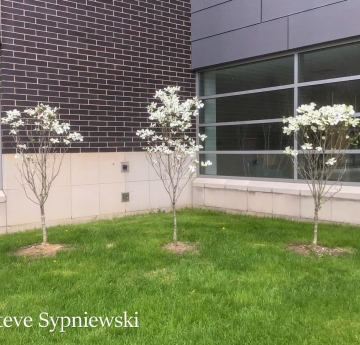Scientific name: Cornus florida
Common name: Flowering Dogwood
Native: Yes
Native range: It is native to southeastern Canada, the eastern United States, and some parts of the south central United States [1,2,4].
Distribution in North America: Click to view the USDA Plants Database page for C. florida.
USDA Zones: 5-9A [3]
Maximum age: May live up to 125 years [4].
Ecology: It hosts a diversity of insects, and the leaves, twigs, and saplings are heavily browsed by deer, beavers, and rabbits. Though the fruit is poisonous to humans, it provides birds, squirrels, deer, beavers, foxes and bears with forage [1,2,4].
Ethnobotany: Its showy blossoms and attractive fall colors make it a desirable ornamental species, used in suburban and urban landscaping [1,2,4]. Prior to the use of plastics, it was a popular material for making tools, notably shuttles for weaving textiles [4]. Indigenous Americans use it for a variety of medical purposes, including alleviating sore throats and stomach pain [2,5].




